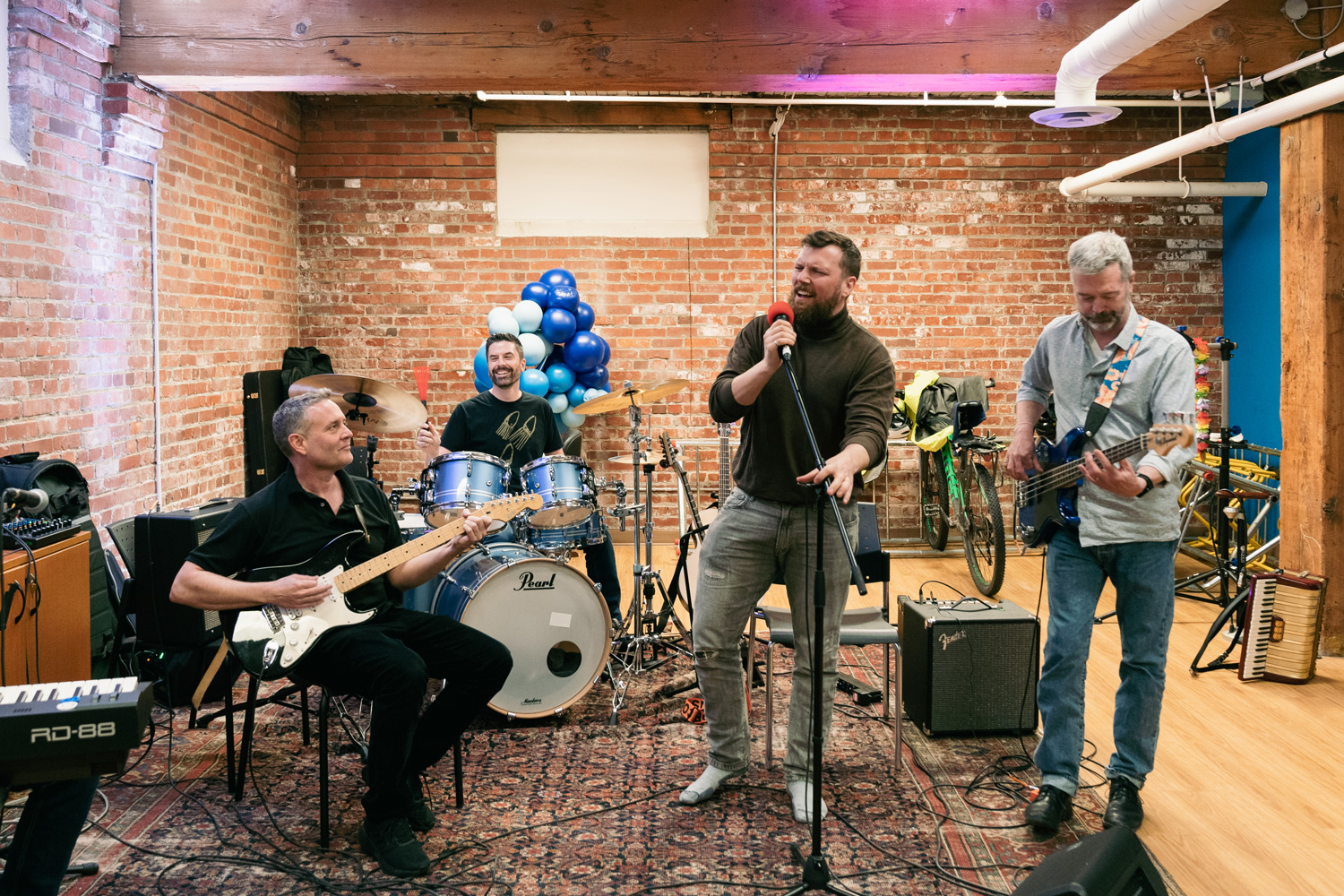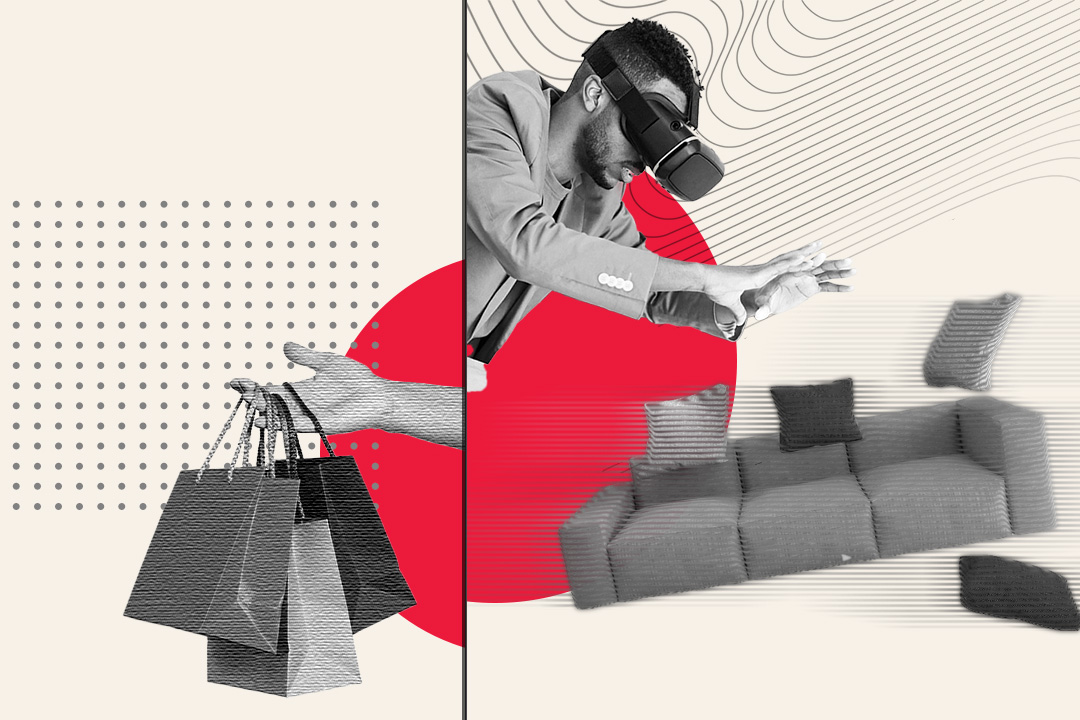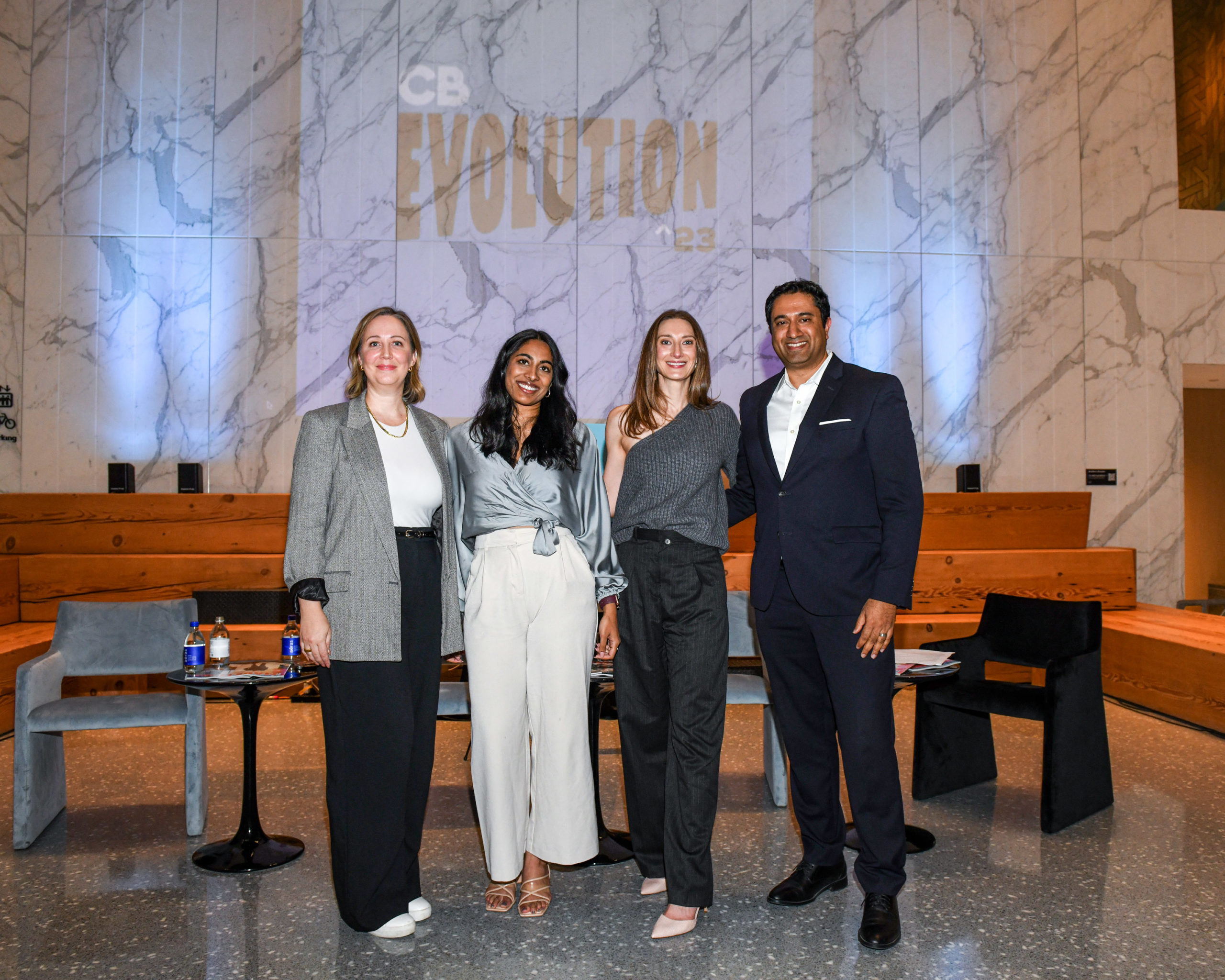How to Throw a Virtual Holiday Party Employees Will Actually Want to Attend

If you’ve been tasked with organizing your office holiday party this year, you have our commiserations. Usually a highlight of the corporate calendar—free food and a chance to see your colleagues get loose on the dance floor? Yes please!—this year’s holiday shindig may be hard to feel enthusiastic about if it is virtual, especially when the WFH loop feels endless. If last year’s hastily organized mid-lockdown Zoom call didn’t quite fill workers with cheer, don’t fret: There are ways to make a virtual holiday party legitimately fun.
That’s precisely why Taryn Herritt and Angela Osborne of The Atelier Collective, an educational platform for women in business, launched “Holiday Experiences” this year. In collaboration with Toronto virtual events company King Events, the experiences are customizable, immersive virtual parties that transport guests into a luxe environment—think Lake Louise or a Fairmont hotel—for live entertainment, a real meal (delivered to your door) and fun activities.
“We saw what happened with the holidays last year, where everything was patched together, and it just wasn’t the beautiful type of experience that people look forward to at the end of the year,” says Herritt. “Our goal was to turn this on its head and create something that you get excited for.”
CB asked Herritt and Osborne for their expert tips on hosting your own virtual office party that employees will actually want to attend. Here’s what they said.
Add layers to your event
The biggest thing to keep in mind with a virtual holiday party is ensuring it isn’t a “one-dimensional screen-time event,” says Herritt. This is why it’s important to make sure your event has what she calls “layers.”
Atelier Collective’s experiences are all destination-based, meaning you enter the virtual lobby of say Toronto’s iconic Fairmont Royal York hotel, and then get taken into a musical performance by Duelling Pianos—always a hit with clients—and then welcomed to a cocktail class with a mixologist. In other words, the events are engaging.
For your event, that engagement could involve, say, a wine-and-cheese pairing hosted by a sommelier where the ingredients are delivered to employees’ homes ahead of time. If you’re in the Greater Toronto Area, Chef & Somm offer an unpretentious experience (no “I taste notes of unicorn and teakwood”) and have the permits to legally deliver bottles of wine to participants’ doors.
If you’d like to keep the tradition of the fancy sit-down dinner alive, work with a caterer that specializes in virtual events, like Daniel et Daniel in Toronto, for example, or The Lazy Gourmet in Vancouver, to create a set menu. The meal will be shared with your guests beforehand, allowing them to pick their courses and have them delivered just in time for when you’ll seat people at their virtual tables, which can be Zoom breakout rooms of six to eight.
“The purpose is to make you feel like you’re somewhere other than your home office,” says Herritt. Osborne adds that the festive feeling can start before the party by setting an exciting dress code or creating a playlist that guests can listen to ahead of time.
Give people things to do together
You want to keep people engaged and activate their senses, says Osborne. Activities are perfect for this and the options for groups are endless: casino night, cookie decorating or wine tastings—and they’re all improved by building what Atelier Collective calls an “experience box.” This is essentially a home delivery filled with items that will turn a 1-D video call into a 3-D sensorial experience.
Halifax-based Black Bow Gift Co., for example, lets you build a custom box or linen tote filled with Canadian-made goodies like artisanal popcorn (perfect for a movie-themed trivia night) or a cute spatula if you’re hosting a cookie decorating session. In Toronto, Paint Cabin hosts virtual painting parties and will ship a box filled with all the paints and brushes (plus optional surprise treats) to the door.
For Atelier Collective’s Fairmont Lake Louise experience, the box contains an evergreen candle that smells like the mountains, a cosy blanket to snuggle up with and a s’mores kit. “There has to be a purpose to these items,” Herritt stresses. “It’s not just something branded with a logo that you throw into a box.”
Experiences can also be done on a shoestring. If you have a smaller budget, you can give guests an ingredient list for items to have on-hand for the event. Employers can also build their own boxes or supply workers with a gift card.
Consider your workplace culture
Like any successful event, you need to know your guests and curate an event that they will actually enjoy. “Your goal is to celebrate and bring people together, and make them feel valued. How you gather truly matters,” says Herritt.
This could mean making sure your virtual holiday party is at a time that works for your team, and includes an activity that everyone can enjoy. If someone doesn’t drink alcohol, for example, make sure there’s zero-proof options if you’re having a craft cocktail class. Because work often bleeds into our personal lives these days, make sure you respect workers’ time. Hosting a holiday party in the day is a nice option, Osborne says, that doesn’t cut into any childcare or personal conflicts.
If you are opting for a gala vibe, however, complete with champagne and a gourmet food delivery, evening might just make more sense. “That way, people can let loose a little more. It all depends on what you’re trying to achieve,” Osborne says.
If you’ve got a company where people might have kids at home, don’t forget the little ones. “We had an event where kids could partake in the cooking class too,” says Herritt.
Create opportunities for interaction
Try to design your event so that people have different ways of connecting, which is often the number-one thing people miss most about the social aspect of a holiday party. Workers enjoy getting to know colleagues from other parts of the business, or seeing co-workers outside of the boardroom.
“It can’t just be the same way all night,” says Herritt, noting that it’s often worthwhile tasking people with a moderator/party-starter role. “At dinner, each of the breakout rooms should have a host who can welcome people and include everyone in conversation.”
Eight to 10 people, by the way, is the optimal number for smaller group chats—and make sure you build in breaks, especially if the meal portion is more than an hour.
But like any good party, the fun must come to an end. “Three hours is your sweet spot if you’ve got those layered activities,” says Osborne.
“It’s long enough that you feel like you’re stepping into an experience, but it’s not so long that you’re getting fatigued by being in front of your screen.”










